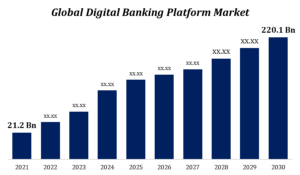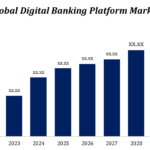The Future of Digital Banking: Trends and Innovations Shaping the Industry
The landscape of banking has undergone a dramatic transformation in recent years, driven by rapid advancements in technology. Digital banking, once a mere convenience, is now at the forefront of the financial industry, reshaping how consumers and businesses interact with their money. As we look towards the future, several key trends and innovations are poised to further revolutionize the banking sector.
1. Rise of Digital-Only Banks
Digital-only banks, also known as neobanks, are gaining traction as they offer a more streamlined and user-friendly banking experience. Unlike traditional banks, these institutions operate entirely online, without physical branches. Their appeal lies in their low operational costs, which allow them to provide competitive rates and fees. Neobanks like Chime, N26, and Revolut are not only challenging established players but are also setting new standards for customer experience and innovation.
2. Integration of Artificial Intelligence
Artificial Intelligence (AI) is transforming various aspects of digital banking, from customer service to risk management. AI-powered chatbots and virtual assistants are becoming increasingly sophisticated, providing customers with instant support and personalized financial advice. Additionally, AI algorithms are enhancing fraud detection and prevention by analyzing transaction patterns and identifying anomalies in real time. This technology not only improves security but also personalizes the banking experience for users.
3. Blockchain and Cryptocurrencies
Blockchain technology is making waves in the banking industry by providing a decentralized and secure way to record transactions. Beyond cryptocurrencies like Bitcoin and Ethereum, blockchain has the potential to streamline various banking processes, such as cross-border payments and smart contracts. Financial institutions are exploring blockchain to reduce transaction costs, enhance transparency, and improve the efficiency of their operations.
4. Open Banking and APIs
Open banking is reshaping the financial ecosystem by allowing third-party developers to build applications and services that interact with bank data through APIs (Application Programming Interfaces). This trend promotes greater competition and innovation, enabling consumers to access a wider range of financial products and services. For instance, users can now link their bank accounts to budgeting apps, investment platforms, and payment services seamlessly.
5. Biometric Authentication
Security remains a top priority in digital banking, and biometric authentication is emerging as a key solution. Technologies such as fingerprint scanning, facial recognition, and voice authentication provide a higher level of security and convenience compared to traditional passwords. Biometric authentication not only enhances security but also speeds up the login process, improving the overall user experience.
6. Personalized Financial Services
The future of digital banking will see a shift towards hyper-personalization, driven by data analytics and machine learning. Banks will leverage customer data to offer tailored financial products and services, from personalized investment recommendations to custom savings plans. This level of personalization will help banks better meet the unique needs of their customers and foster stronger relationships.
7. Sustainable Banking Practices
As environmental and social concerns become increasingly important, banks are adopting sustainable practices to align with customer values. Digital banking platforms are integrating features that promote eco-friendly behaviors, such as paperless statements and carbon footprint tracking. Additionally, banks are investing in green bonds and sustainable investment funds, reflecting a growing commitment to corporate social responsibility.
8. Enhanced Customer Experience through UX/UI Design
User experience (UX) and user interface (UI) design are critical in digital banking. Banks are investing in intuitive and aesthetically pleasing interfaces to ensure a seamless and enjoyable user experience. Innovations in UX/UI design, such as simplified navigation, interactive features, and responsive design, are crucial in attracting and retaining customers in a competitive digital landscape.
9. Integration of Financial Health Tools
Digital banking platforms are increasingly incorporating tools that help users manage their financial health. Features such as budgeting tools, spending analytics, and financial wellness assessments provide users with valuable insights into their financial habits. These tools empower customers to make informed decisions and improve their overall financial well-being.
10. Regulatory Changes and Compliance
The regulatory environment for digital banking is evolving to address new challenges and opportunities. Governments and regulatory bodies are implementing frameworks to ensure the security and fairness of digital financial services. Compliance with these regulations will be essential for banks to maintain trust and credibility in the digital era.
Conclusion
The future of digital banking is characterized by rapid technological advancements and evolving customer expectations. As digital-only banks, AI, blockchain, open banking, and biometric authentication continue to shape the industry, the focus will remain on delivering secure, personalized, and convenient financial services. By embracing these trends and innovations, banks can stay ahead of the curve and provide exceptional value to their customers in the ever-changing digital landscape.


































